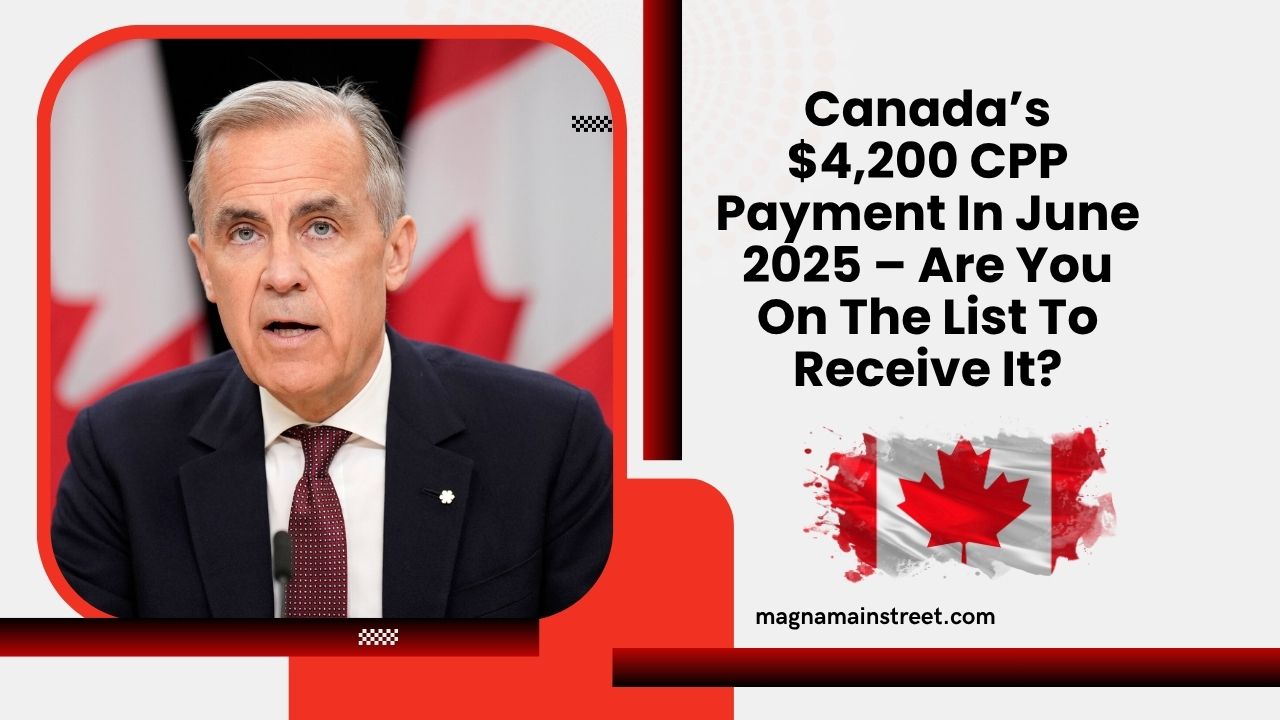If you’ve seen headlines or social media posts claiming a $4,200 CPP payment is arriving in June 2025, you’re not alone. These rumors have gained traction, especially among retirees and Canadians approaching retirement age.
But let’s set the record straight: there is no $4,200 lump-sum CPP payment scheduled for June 2025.
Here’s everything you need to know about the real CPP payment schedule, eligibility criteria, and monthly payout structure, along with what may be causing this $4,200 confusion.
The Reality: What’s Actually Being Paid?
The Canada Pension Plan (CPP) is a monthly retirement benefit, not a one-time lump-sum deposit. In June 2025, Canadians eligible for CPP will receive their monthly retirement payout on the scheduled date, which is June 28, 2025.
Here’s a look at the actual payment details for June:
| Detail | Amount or Information |
|---|---|
| CPP Payment Date | June 28, 2025 |
| Max Monthly CPP (Age 65) | $1,433.00 |
| Average Monthly CPP | $899.67 (as of October 2024) |
| $4,200 CPP Rumor | False – No such one-time payment |
So where did this $4,200 figure come from? Let’s break it down.
The $4,200 Confusion Explained
The $4,200 claim is most likely a misunderstanding of how benefits like CPP, OAS, and GIS are calculated. Some people may have:
- Added up 3 or 4 months of payments
- Combined CPP with OAS or GIS
- Included retroactive payments for late applications
- Confused tax refunds with CPP deposits
Whatever the case, CPP is paid monthly, and even the highest possible payment doesn’t reach $4,200 in one go—unless there’s an exceptional case involving retroactive payments or corrections.
Understanding How CPP Works
The Canada Pension Plan is funded by contributions from your earnings during your working years. It’s designed to replace a portion of your income in retirement, not the entire amount.
Key facts about CPP:
- You can start receiving CPP as early as age 60
- The longer you wait (up to age 70), the more you receive monthly
- Contributions are split between you and your employer (or fully paid if self-employed)
Think of CPP as one part of your retirement income plan, along with Old Age Security (OAS), GIS, and personal savings.
Types of CPP Benefits
CPP offers more than just retirement income. Here are other CPP-related programs you may qualify for:
| Benefit Type | Who It’s For |
|---|---|
| Retirement Pension | Canadians 60+ who contributed during their career |
| Post-Retirement Benefit | For workers over 60 still contributing to CPP |
| Disability Benefit | Under 65, disabled, and unable to work |
| Survivor’s Pension | For spouses or partners of deceased contributors |
| Children’s Benefit | Children of deceased or disabled CPP contributors |
Each benefit has its own eligibility and payment rules, but they all draw from your contribution history.
Eligibility Requirements for CPP
To qualify for CPP payments, you must:
- Be at least 60 years old
- Have made at least one valid contribution to the CPP
Contributions are deducted from your pay throughout your working years and matched by your employer.
How Much Will You Actually Get?
The monthly amount depends on:
- How much and how long you contributed
- When you start receiving benefits
- Whether you qualify for dropout provisions (excluding low-income years)
Let’s look at an example:
| Person | Start Age | Contribution History | Monthly CPP (2025) |
|---|---|---|---|
| Alice | 65 | 39 years maxed | $1,433.00 |
| Bob | 60 | 30 years average | ~$700 |
Waiting until age 70 can boost your monthly CPP by up to 42% compared to taking it at 65.
Planning Beyond CPP
Think of CPP as one leg of the retirement stool. The other two legs are:
- Old Age Security (OAS) – Based on years lived in Canada
- Guaranteed Income Supplement (GIS) – For low-income seniors
- Your own savings – RRSPs, pensions, and TFSAs
With proper planning, all three components can work together to support your lifestyle in retirement.
If You Worked in Quebec: QPP Applies
If your work history is in Quebec, you contributed to the Quebec Pension Plan (QPP) instead of CPP. QPP is almost identical in function and benefit structure but administered by the provincial government.
What You Should Do Now
Here’s a quick CPP readiness checklist:
- Set up your My Service Canada Account
- Review your contribution history
- Use the Retirement Income Calculator
- Decide when to start receiving CPP
- Consult a financial advisor for a personalized strategy
Don’t fall for online misinformation. There is no $4,200 CPP payment coming in June 2025—but there are real monthly benefits you can plan around.
While headlines about a $4,200 CPP payment may sound exciting, they’re unfortunately not true. The actual maximum monthly CPP payment for 2025 is $1,433, and the June 2025 deposit is scheduled for June 28.
Always rely on official information and plan your retirement with real facts and figures. With the right strategy, you can still maximize your CPP and retirement income—no need for viral rumors to guide your financial future.
FAQs
Is there a $4,200 CPP payment coming in June 2025?
No. The $4,200 claim is false. The actual maximum monthly CPP payment is $1,433 in 2025.
When is the CPP payment date for June 2025?
The official CPP payment date is June 28, 2025.
Who qualifies for CPP in Canada?
You must be at least 60 years old and have made at least one valid contribution to qualify for CPP.




















